Roland’s numbering system has thrown up some heavy hitters, but the TR-1000 might just be the boldest of the lot. Dropping in 2025, it’s the first time in 40 years that Roland has gone back to a true analogue drum engine roots, and it’s every bit as huge as you’d hope. The kicks land like gut punches, the snares cut with surgical snap, and the whole thing breathes with that unmistakable analogue warmth that made its ancestors immortal. Only this time, there’s digital muscle under the hood too, ready to twist, bend, and mangle beats into shapes we’ve never heard before.
The sequencer is a joy in itself, with mechanical keys that make programming feel tactile and alive, more like playing an instrument than operating a machine. Throw in modern performance tricks like probability, motion recording, and a Morph slider for instant chaos, and suddenly you’re not just sequencing patterns, you’re performing rhythms. It’s the kind of box that makes you want to lose an evening just pushing steps, twisting knobs, and grinning at the results.
Is it a throwback? Not really. The TR-1000 has analogue heart, sure, but it’s brimming with modern power: stereo sampling, FM and VA engines, circuit-bent oddities, and enough onboard memory to stash a universe of sounds. It’s part homage, part future shock. If the 808 and 909 laid the foundations, the TR-1000 is the skyscraper that sits on top of them.
TR-1000 Key Features:
- Analogue 909 and 808 Circuits: First true analogue TR engine in 40 years, with recreated 808 & 909 circuits within a single unit!
- Digital Engines: ACB modelling, FM, VA & PCM and Sampling capabilities including circuit bent versions of their vintage units.
- Mechanical Keys + Expanded Control: Controls that are a delight to use, wonderful feeling keys and mappable controls to suit your performance.
- Built like a tank: Rugged metal chassis built for studio grind & live mischief
Roland TR-909 – 1983
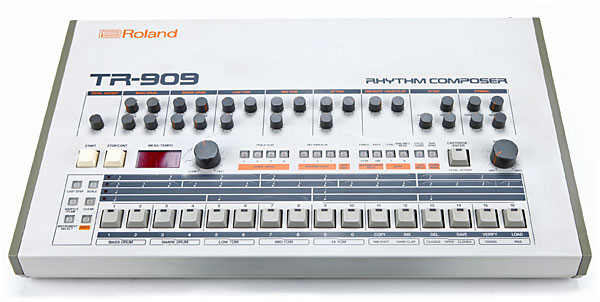
When the TR-909 first stumbled into the world in 1983, people weren’t quite sure what to do with it. Was it a successor to the 808? A strange hybrid of analogue circuitry and crunchy 6-bit samples? A glorified metronome with a bad attitude? As it turned out, the answer was: all of the above. Its kick drum was fat enough to rearrange your ribcage, its snare hit with just the right amount of grit, and its hats snapped like a breadstick at a wine tasting. Here’s the kicker: those hi-hats and cymbals were sampled rather than analogue; Artushi Hoshiai had no idea they’d go on to become the defining tick-tock heartbeat of dance music worldwide. What started as “we can’t synthesize the right sound” ended up being one of the most enduring sonic signatures in electronic music history, and from a collection of mismatched Zildjian and Paiste cymbals no less. Add in its sequencer with individual accents on each step and a shuffle of pure groove, and suddenly you have rhythm patterns with human feel, or at least the robotic approximation of human feel. It became the bedrock of house and techno, stomping its way from Chicago warehouses to Berlin bunkers. These days, you’ll struggle to find a club record without a 909 skeleton lurking in the background.
TR-909 Key Features:
- Analogue Kick + Snappy Sampled Hats:
A best-of-both-worlds recipe: analogue thump for chest-caving lows, crispy 6-bit cymbals up top. Perfect for Drum Machines aficionados craving character.
- Per-Instrument Accents & Shuffle:
Groove tools that turned “metronome” into “motorik mayhem”; nudging patterns until the room starts nodding in unison.
- DIN Sync & MIDI:
Plays nicely with vintage Sequencers, modern DAWs, and your unruly herd of Modular & Eurorack Synths.
TR-909 Notable Artists:
- Jeff Mills
- Daft Punk
- Frankie Knuckles
- The Prodigy
- The Chemical Brothers
Get the 909 Sound





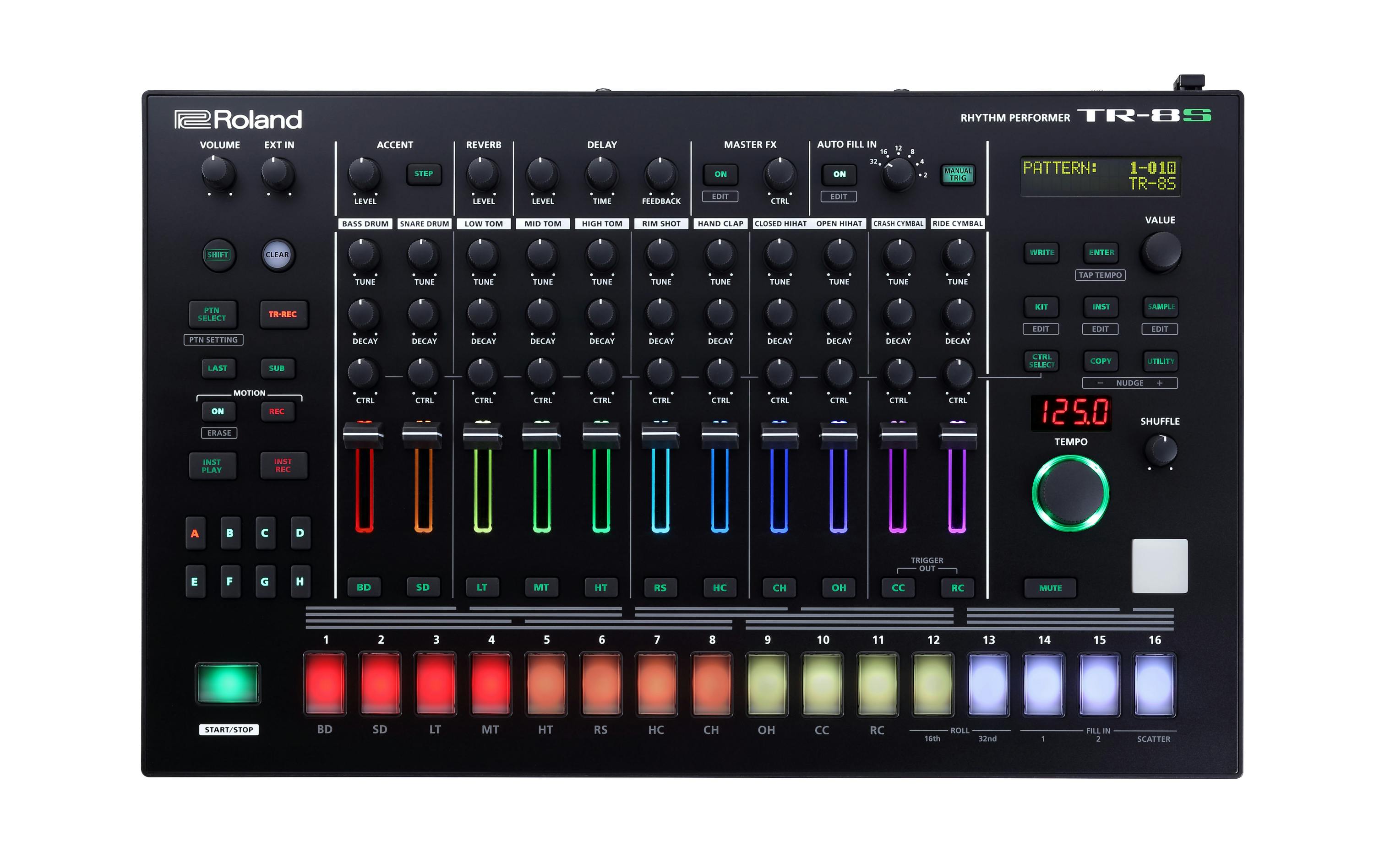
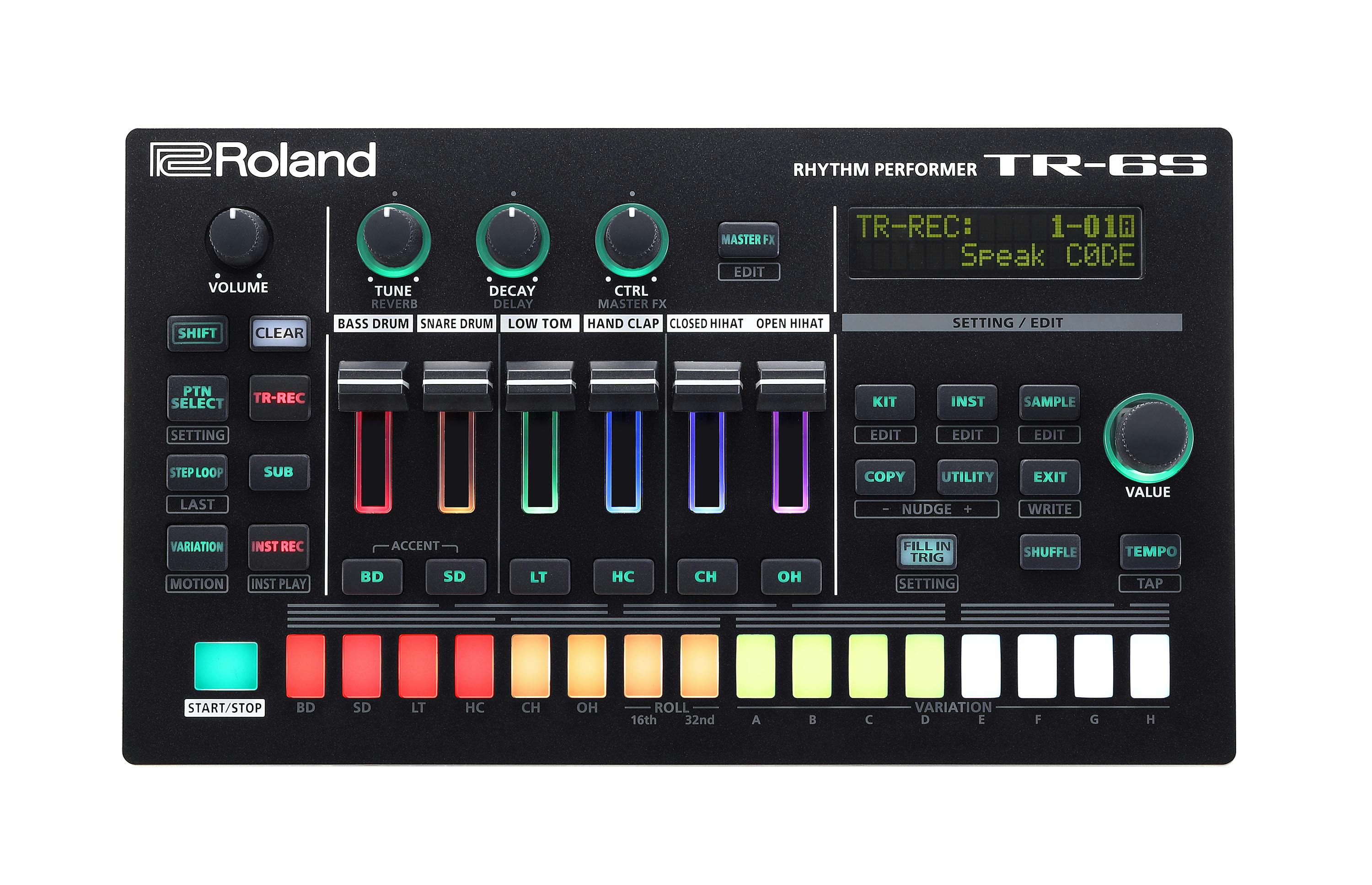
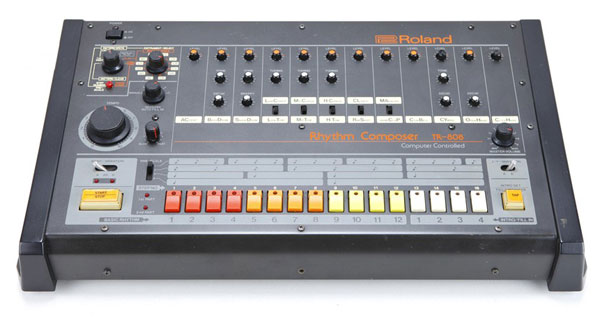
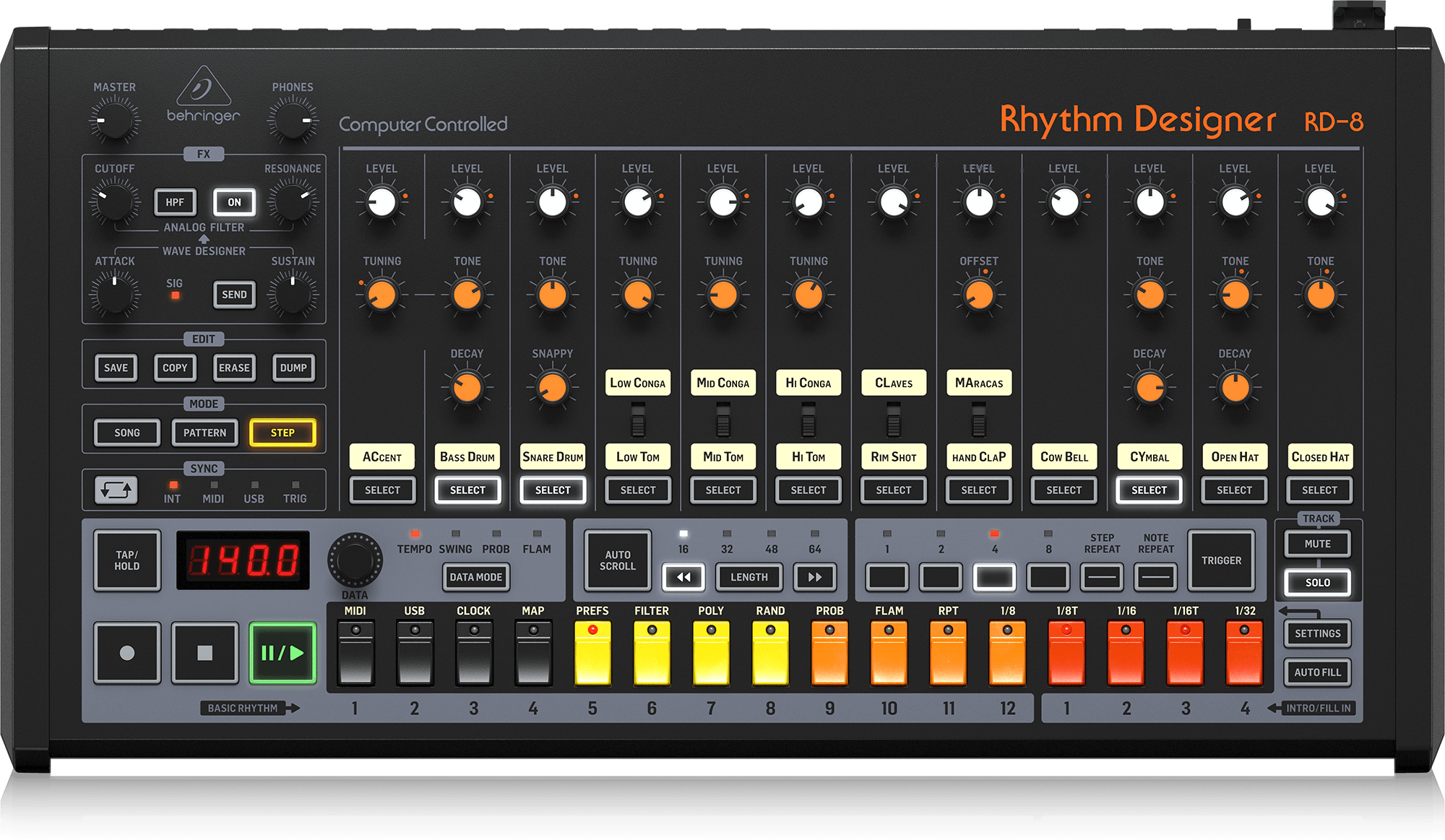
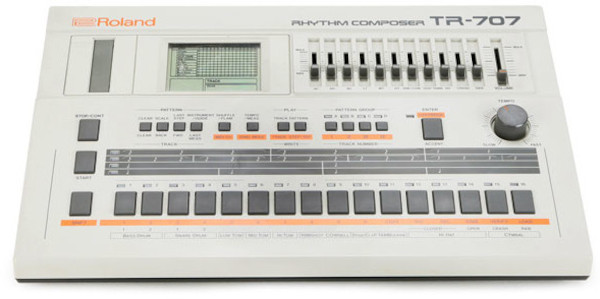
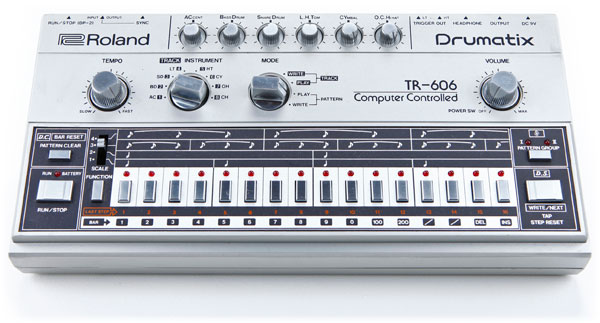

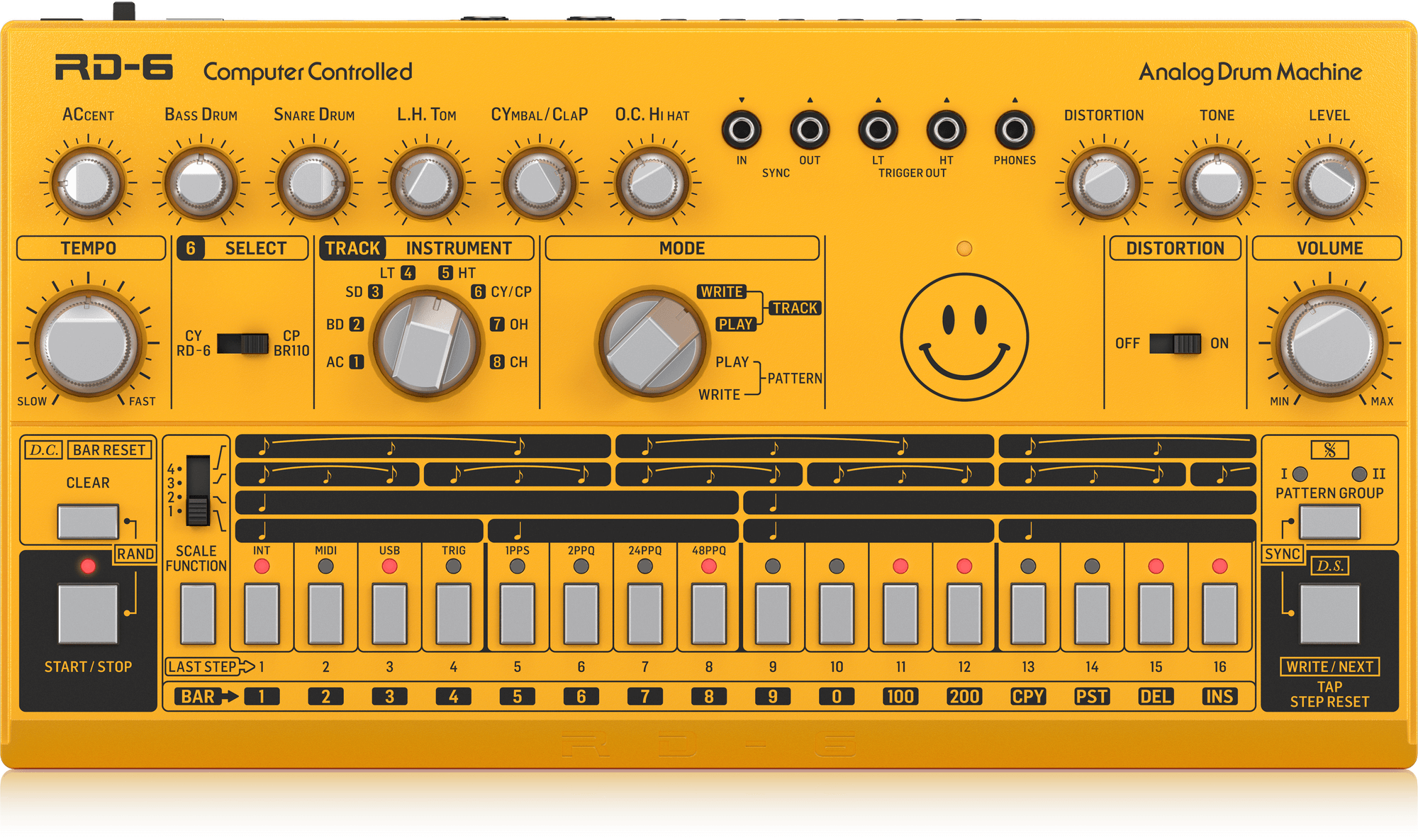
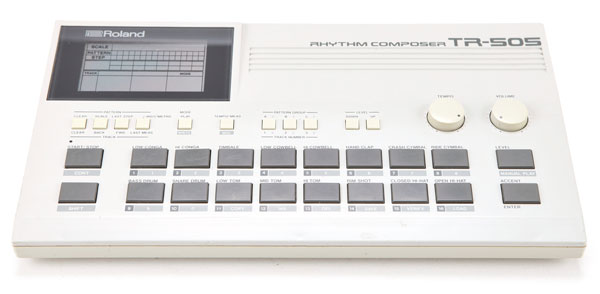
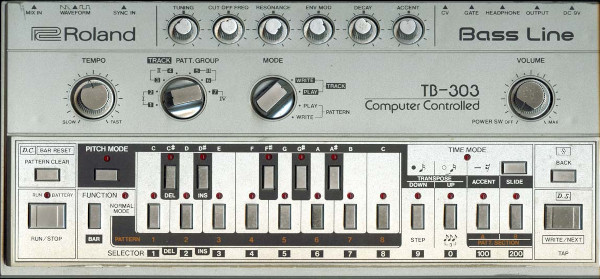



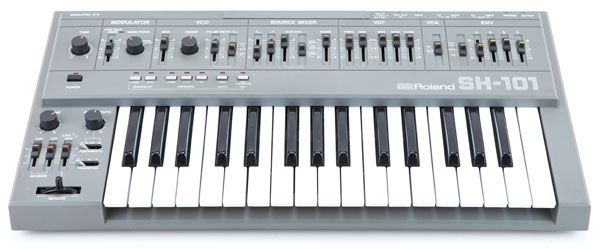


Responses & Questions